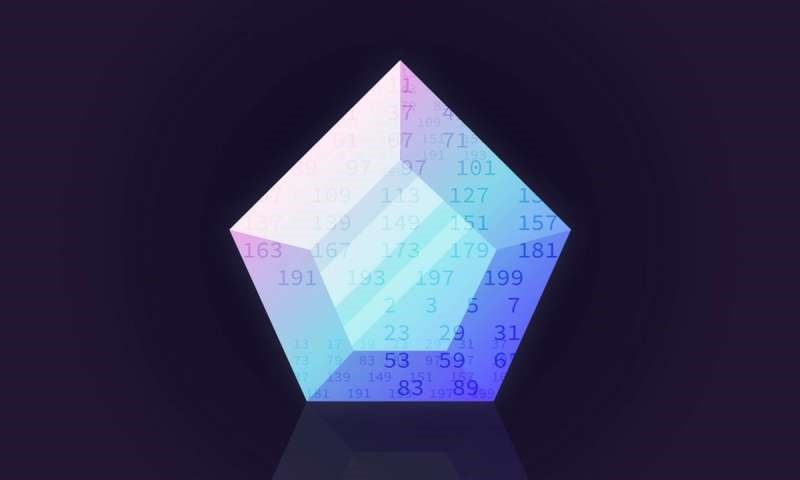Mathematics is often referred to as the language of nature. A new study further makes this case by demonstrating that the distribution of prime numbers bears a striking similarity to the positions of atoms in materials known as quasicrystals. The results point to a level of order not previously discerned in primes, which are numbers divisible only by one and themselves, and whose occurrences over vast stretches of the number line appear to be mostly random. Fathoming this order suggests a way to better predict large prime numbers, valued for their role in modern cryptography. See also: Cryptography; Crystal; Crystallography; Crystal structure; Mathematics; Natural quasicrystals; Number theory; Quasicrystal

A research team from Princeton University began by referencing maps of atom locations in quasicrystals revealed by a technique called X-ray crystallography. Predictable patterns of bright spots, known as Bragg peaks, emerge when X-ray light is shined into the ordered structure of crystals. Quasicrystals are less regularly ordered than conventional crystals, displaying unusual symmetries and only partial structural periodicities. As a result, their patterns of Bragg peaks are more complex and varied. See also: Atom; Light; X-ray crystallography; X-ray diffraction; X-rays
The researchers ran a computer simulation to model the way in which a number line containing prime numbers, standing in as atoms, would appear if it were subjected to X-ray crystallography. The simulation yielded Bragg peak–like patterns over large intervals of integers, revealing an unexpected higher order to the overall dispersion of primes. This arrangement is specifically known as hyperuniformity, and it has many examples in nature—for instance, in the patterns of cone cells in birds' eyes and in the distribution of matter on cosmological scales. See also: Aves; Color vision; Cosmology; Eye (vertebrate); Simulation
The matching between the primes and quasicrystal structure was not exact, with a remaining degree of erraticism to the former versus the latter. But the relationship held true enough for the researchers to develop an algorithm than can forecast primes with high accuracy, paving the way for new advances in the study of prime numbers for both pure and applied mathematics. See also: Algorithm





